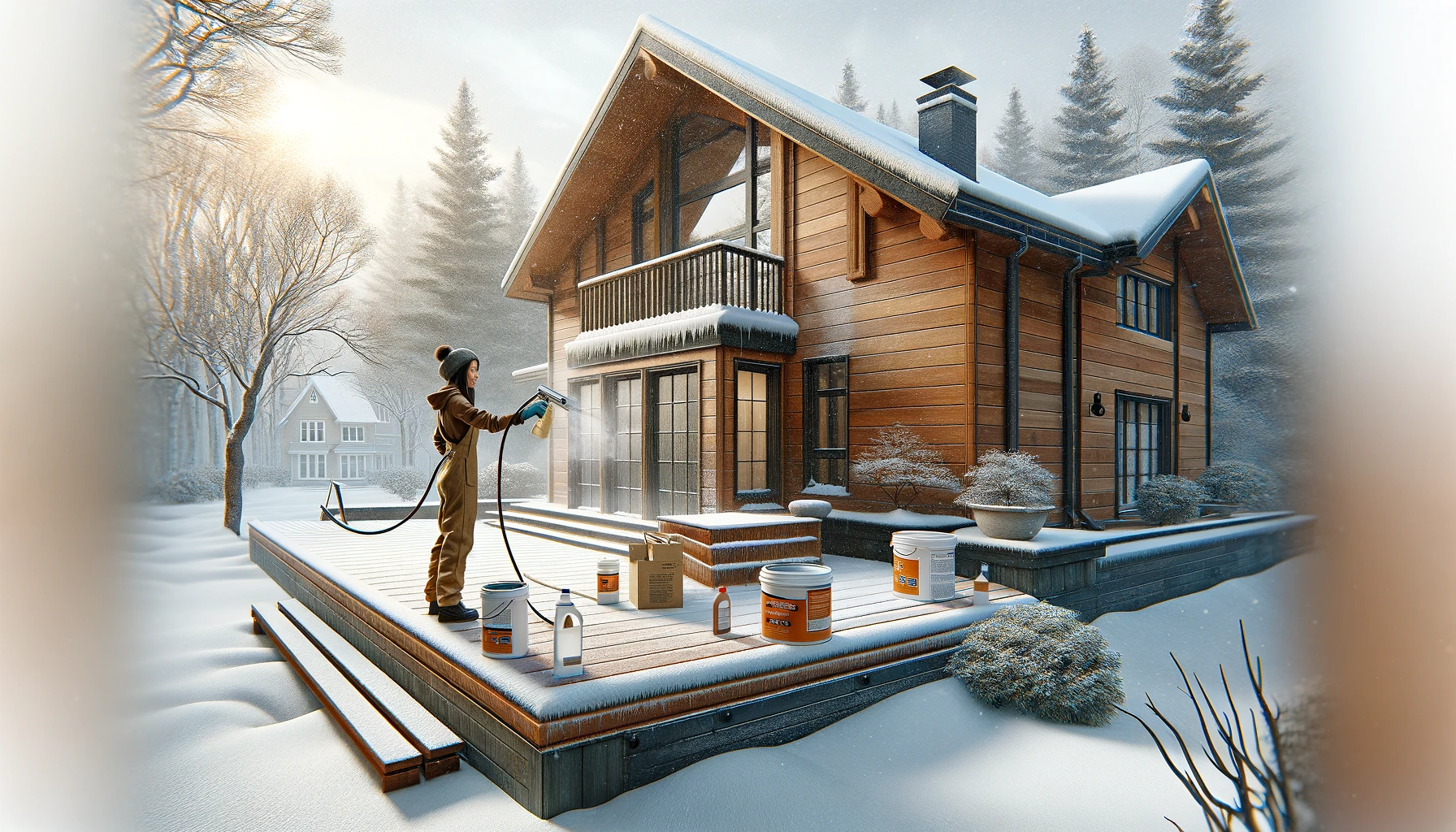
How To Prepare Your Wooded Exteriors For Winter
As the crisp breeze of autumn gives way to the chilly embrace of winter, it’s time to turn our attention to the outdoor spaces that surround our homes, especially the wooded elements.
Naturally, the changing seasons bring about unique challenges for our wooden exteriors. Due to this, it is important to ensure that your wooded exteriors are well-prepared for the winter ahead.
In this guide, we’ll delve into simple yet effective ways to ready your wooded exteriors for the colder months.
Carry Out Checks and Repairs
Taking the time for a thorough check and timely repairs forms a crucial step in prepping your wooded exteriors for the winter chill. It’s like giving your wooden exterior a health check-up before it faces the elements head-on.
Each change of season warrants a keen eye, so you should ensure that every crack or bare spot doesn’t go unnoticed. You wouldn’t want these vulnerable areas to become an entry point for the cold or, worse, an invitation for dry rot to set in.
Now, about those cracks, holes, or splits, they are not just cosmetic issues. They’re potential weak spots that need attention. Grab some wood filler and patch up those gaps.
Reinforce the wood’s structure and ward off any looming threats that winter might bring. It’s like a little DIY first aid for your outdoor retreat.
You should also keep an eye out for telltale signs that your deck is crying out for a refresh. These signs include peeling, flaking, odd discoloration, or the unwelcome growth of mold. If you spot any of these red flags, it’s a signal that your deck deserves some extra TLC.
Clean, Dry, and Treat Your Wooden Exterior
Cleaning, drying, and treating your cherished wooden exterior are key rituals in winterizing your wooded exterior.
Before you dive into the cleaning process, start by giving your wood a gentle wipe-down or a sweep to get rid of any lingering dirt and debris. Once that’s done, it’s time to bring out the warm, soapy water and a soft brush or cloth – It’s always the perfect concoction for wooden surfaces.
Clean the wood properly to prepare it for the protective layer it deserves. But remember to wait a little after cleaning the wood. After cleaning, you should allow the surface of the wood to bask in the open air.
Allow it to dry completely before proceeding to apply the wood treatment. If you’re not sure about how to go through this process, you can check the guidance on your chosen product’s packaging; it often contains guides on the ideal temperature conditions for application.
Note that the process of recoating a stained timber deck isn’t a magic eraser for imperfections. In fact, it might just accentuate the stains if not done right.
If you want to refresh your wood’s surface alongside its treatment, you can get a cleaner that not only removes stains effectively but also rejuvenates the wood’s natural beauty.
Cover and Store Wooden Garden Furniture
If you have movable furniture in your garden, you should consider storing and covering them up indoors before winter. This is, of course, after you have cleaned, dried, and treated them (you can refer to tip number 1 for the full treatment details).
For those without the luxury of indoor storage, outdoor furniture can still weather the winter storm with a little extra care. When storing outside, ensure to wrap your furniture in a heavy-duty waterproof cover or a trusty tarpaulin.
You should also position the furnitures uphill, in a sheltered nook, far from the reach of water accumulation. And here’s a nugget of wisdom – avoid placing it directly on wet grass or dirt, as these can get pretty soggy.
Opt for a firm, even surface, perhaps with the help of a palette or cinder blocks to elevate your wooden furniture. This will help keep them away from ground moisture.
Keep Your Surrounding Clear
As the cold and rainy months set in, it’s essential to look out for leaves and dirt. Sweep away those fallen leaves and pesky dirt that tend to gather, not just for the sake of appearances but to ward off potential trouble.
Leaves and debris can create the perfect breeding ground for mold and trap lingering dampness. This often forms a potential recipe for damage to your cherished wooden surfaces.
So, grab a broom and clear away the remnants of the seasons past. This simple act maintains the visual appeal of your outdoor space and acts as a shield against the unseen threats that winter may bring.
Conclusion
As you embark on the journey to protect your wooded exteriors from winter, remember that the care you invest in today ensures the longevity and beauty of your outdoor wooden materials.
Longhouse Cedar, with its commitment to quality and expertise in cedar products, stands as a reliable ally in this endeavor. Explore our offerings today to discover a range of solutions that can elevate your outdoor experience.
